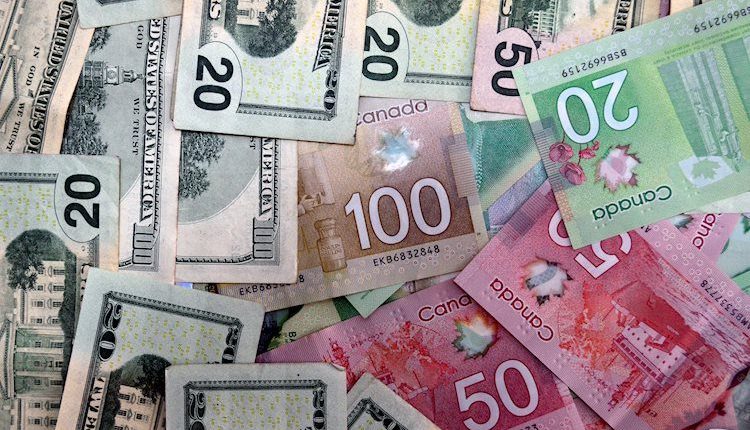- USD/CAD edges higher to 1.3975 in Friday’s early Asian session.
- The cautious mood of the Fed officials and the Trump trade support the USD.
- The markets reduced the odds of a 50 bps rate cut at the BoC’s December 11 policy meeting.
The USD/CAD pair trades with mild gains around 1.3975 during the early Asian session on Friday. The strengthening of the US Dollar (USD) to new 2024 peaks provides some support to the pair. Investors brace for the flash S&P Global Manufacturing and Services Purchasing Managers Index (PMI), along with the final Michigan Consumer Sentiment, which is due later on Friday.
Recent comments from the Federal Reserve (Fed) officials boost the USD broadly. Chicago Fed President Austan Goolsbee said on Thursday that it may make sense to the slow pace of Fed rate cuts as inflation is on its way down to 2%. Additionally, markets expect Trump’s proposed policies including tax cuts, trade tariffs and deficit spending could trigger a fresh wave of inflation and could compel the US Fed to slow the pace of rate reductions.
The rising expectation that the Fed may take a slower course in its rate cut path continues to underpin the Greenback. Meanwhile, the US Dollar Index (DXY), which measures the USD against a basket of currencies, currently trades near 107.00, the highest level since November 2023. Futures traders are now pricing in a 57.8% odds that the Fed will cut rates by a quarter point, down from around 72.2 % last week, according to data from the CME FedWatch Tool.
On the other hand, the possibility that the Bank of Canada (BoC) would deliver a second oversized rate cut next month has diminished after the latest Canadian inflation report came in slightly hotter than expected. The markets have priced in a nearly 23% chance of a 50 basis-points (bps) rate cut by the BoC at the December meeting, down from nearly 40% before the inflation report.
Canadian Dollar FAQs
The key factors driving the Canadian Dollar (CAD) are the level of interest rates set by the Bank of Canada (BoC), the price of Oil, Canada’s largest export, the health of its economy, inflation and the Trade Balance, which is the difference between the value of Canada’s exports versus its imports. Other factors include market sentiment – whether investors are taking on more risky assets (risk-on) or seeking safe-havens (risk-off) – with risk-on being CAD-positive. As its largest trading partner, the health of the US economy is also a key factor influencing the Canadian Dollar.
The Bank of Canada (BoC) has a significant influence on the Canadian Dollar by setting the level of interest rates that banks can lend to one another. This influences the level of interest rates for everyone. The main goal of the BoC is to maintain inflation at 1-3% by adjusting interest rates up or down. Relatively higher interest rates tend to be positive for the CAD. The Bank of Canada can also use quantitative easing and tightening to influence credit conditions, with the former CAD-negative and the latter CAD-positive.
The price of Oil is a key factor impacting the value of the Canadian Dollar. Petroleum is Canada’s biggest export, so Oil price tends to have an immediate impact on the CAD value. Generally, if Oil price rises CAD also goes up, as aggregate demand for the currency increases. The opposite is the case if the price of Oil falls. Higher Oil prices also tend to result in a greater likelihood of a positive Trade Balance, which is also supportive of the CAD.
While inflation had always traditionally been thought of as a negative factor for a currency since it lowers the value of money, the opposite has actually been the case in modern times with the relaxation of cross-border capital controls. Higher inflation tends to lead central banks to put up interest rates which attracts more capital inflows from global investors seeking a lucrative place to keep their money. This increases demand for the local currency, which in Canada’s case is the Canadian Dollar.
Macroeconomic data releases gauge the health of the economy and can have an impact on the Canadian Dollar. Indicators such as GDP, Manufacturing and Services PMIs, employment, and consumer sentiment surveys can all influence the direction of the CAD. A strong economy is good for the Canadian Dollar. Not only does it attract more foreign investment but it may encourage the Bank of Canada to put up interest rates, leading to a stronger currency. If economic data is weak, however, the CAD is likely to fall.
Read the full article here

